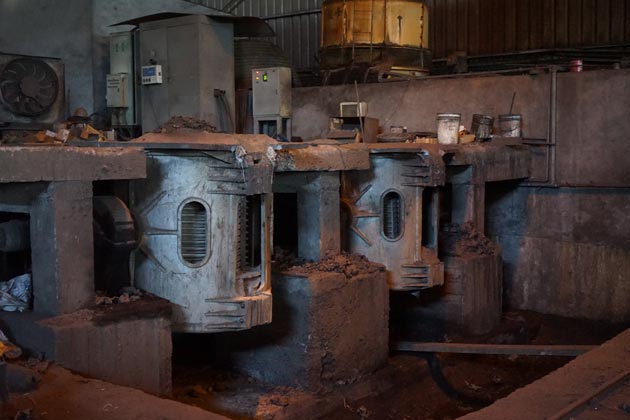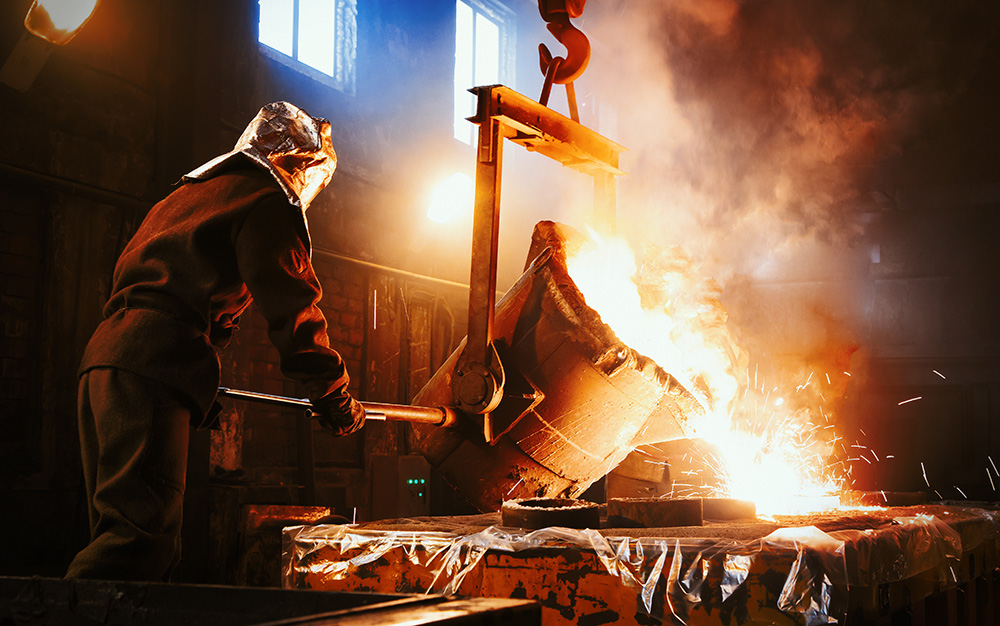Detailed overview of how an Aluminum Foundry creates and refines metal parts
Wiki Article
Discover the Innovative Methods Made Use Of in a Metal Foundry for Superior Casting Outcomes
In today's competitive production landscape, metal foundries are increasingly embracing cutting-edge methods to enhance spreading outcomes - Metal Casting. Advanced computer system simulations enable specific modeling of liquified metal habits, while 3D printing makes it possible for fast production of complicated mold and mildews. In addition, green products and automation streamline procedures. These growths promise considerable enhancements in efficiency and quality assurance. The impact of these modern technologies on sustainability and manufacturing practices continues to be to be completely explored.Advanced Computer Simulations in Metal Casting
Advanced computer simulations have reinvented the metal spreading process by enhancing accuracy and efficiency. These advanced devices enable engineers to develop online models of cast components, enabling them to anticipate the habits and examine of liquified metal during the casting phase. By mimicing various specifications such as temperature, circulation price, and cooling rates, suppliers can determine prospective problems prior to physical production starts.This aggressive technique reduces waste and lessens costly errors, inevitably causing boosted item top quality. Furthermore, simulations promote the optimization of mold designs, guaranteeing that they meet the particular needs of each job. The assimilation of computational liquid dynamics (CFD) and limited element analysis (FEA) further contributes to the accuracy of these simulations, supplying insights that were formerly unattainable. Consequently, progressed computer simulations have actually become a crucial element of contemporary metal foundries, greatly advancing the market's capabilities.
3D Printing for Mold And Mildews and Patterns
3D printing has become a groundbreaking method for producing molds and patterns in the metal foundry industry. This modern technology makes it possible for the fast production of complex geometries that typical manufacturing techniques have a hard time to accomplish. By utilizing additive production, foundries can produce detailed designs with minimized preparations and material waste. The ability to create molds on need enables higher versatility in style iterations, assisting in faster prototyping and adjustments.3D printing can make use of a variety of products, consisting of steels and plastics, tailored to details casting demands. This adaptability improves the precision of molds, resulting in exceptional spreading results with improved surface area finishes. In addition, the decrease in the variety of parts called for simplifies assembly processes, even more enhancing production efficiency. As foundries remain to adopt 3D printing, they are positioned to redefine industry requirements, leading the way for technology and improved productivity in metal spreading procedures.
Eco-Friendly Materials and Processes
As the metal foundry industry encounters increasing stress to decrease its ecological footprint, the adoption of green products and processes has come to be essential. Factories are currently checking out lasting choices to typical materials, such as utilizing recycled metals and bio-based binders. These products not just decrease waste however additionally reduced power usage during production.Furthermore, improvements in sand casting methods have actually resulted in using artificial sands that are much less damaging to the atmosphere. Factories are also applying cutting-edge processes like liquified metal therapy that lowers exhausts and boosts the quality of actors products.
Moreover, water-based finishings have changed harmful solvents, advertising a much safer work atmosphere (Aluminum Foundry). By integrating these environment-friendly techniques, metal foundries can markedly lower their environmental effect while maintaining top notch casting outcomes. This change not only benefits the environment yet additionally lines up with the growing customer demand for lasting production solutions
Automation and Robotics in Foundry Operations
While the metal foundry sector welcomes advancement, the combination of automation and robotics is changing operations greatly. Automated systems streamline procedures such as mold and mildew production, metal putting, and casting completing, substantially enhancing efficiency. Robotics help with the handling of heavy products, minimizing the threat of work environment injuries and ensuring safer atmospheres.
Further, making use of automated guided automobiles (AGVs) enhances product transportation within facilities, ensuring timely shipment of elements to suitable workstations. By applying these innovations, foundries can adjust to rising and fall needs with better agility, inevitably causing boosted profitability and competition in the marketplace. As click to find out more automation and robotics continue to progress, they hold the prospective to redefine traditional foundry practices and drive additional improvements in casting techniques.
Real-Time Tracking and Top Quality Control Techniques
The developments in automation and robotics have actually led the method for a lot more innovative approaches to top quality guarantee in metal foundries. Real-time monitoring systems utilize sophisticated sensors and data analytics to track crucial parameters throughout the casting procedure. These systems constantly examine variables such as pressure, temperature, and material make-up, allowing prompt discovery of inconsistencies from established criteria.Quality control strategies now incorporate equipment understanding formulas that evaluate historical information to predict potential problems prior to they happen. This aggressive strategy minimizes waste and enhances general production efficiency. Furthermore, incorporated responses loopholes permit for quick you can try this out adjustments, making certain that each spreading meets rigorous high quality demands.
The implementation of digital doubles-- online reproductions of physical possessions-- has actually additionally reinvented high quality guarantee, allowing engineers to simulate and optimize procedures in real-time. Together, these cutting-edge methods substantially enhance the dependability and top quality of spreadings, establishing brand-new sector criteria in metal foundry procedures.
Frequently Asked Questions
What Sorts of Metals Are Typically Cast in Factories?
Frequently cast metals in foundries include light weight aluminum, iron, bronze, and brass. Each metal displays unique properties, making them ideal for various applications, such as auto parts, equipment, and artistic sculptures, boosting their flexibility in production.
How much time Does the Casting Refine Commonly Take?
The casting procedure commonly takes several hours to days, depending upon elements such as the intricacy of the mold and mildew, sort of metal utilized, and cooling requirements. Each phase influences the overall duration substantially.What Safety Measures Are in Place for Foundry Employees?

Exactly how Are Issues in Castings Identified and Addressed?
Issues in spreadings check my reference are identified through aesthetic evaluations and non-destructive testing methods. As soon as identified, foundry employees resolve them by improving processes, adjusting product compositions, and carrying out restorative steps to assure quality and compliance with standards.What Is the Price Array for Metal Casting Services?
The price range for metal casting services normally varies in between $1 to $10 per extra pound, depending on variables such as material kind, complexity of the layout, and production volume, influencing general pricing considerably.In today's competitive manufacturing landscape, metal foundries are significantly embracing ingenious strategies to boost spreading outcomes. As the metal foundry industry encounters increasing pressure to reduce its environmental impact, the adoption of environmentally friendly materials and processes has actually become vital. Factories are now discovering sustainable alternatives to traditional materials, such as making use of recycled steels and bio-based binders. By integrating these green methods, metal foundries can significantly decrease their environmental effect while keeping top quality spreading outcomes. The advancements in automation and robotics have actually paved the way for a lot more innovative approaches to top quality guarantee in metal foundries.
Report this wiki page